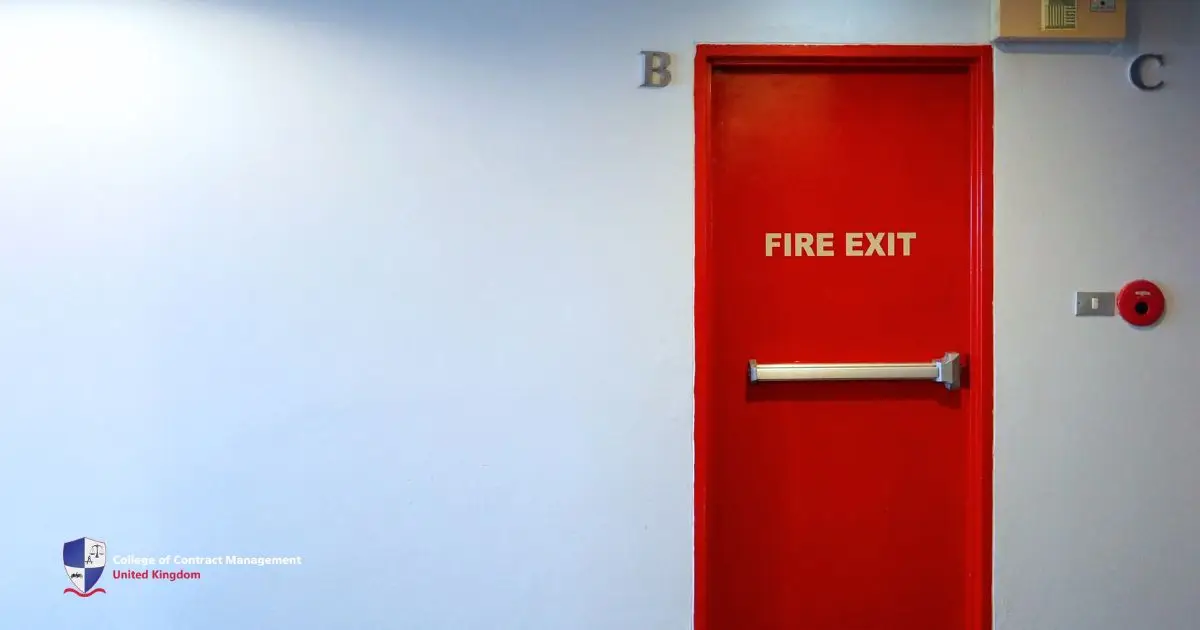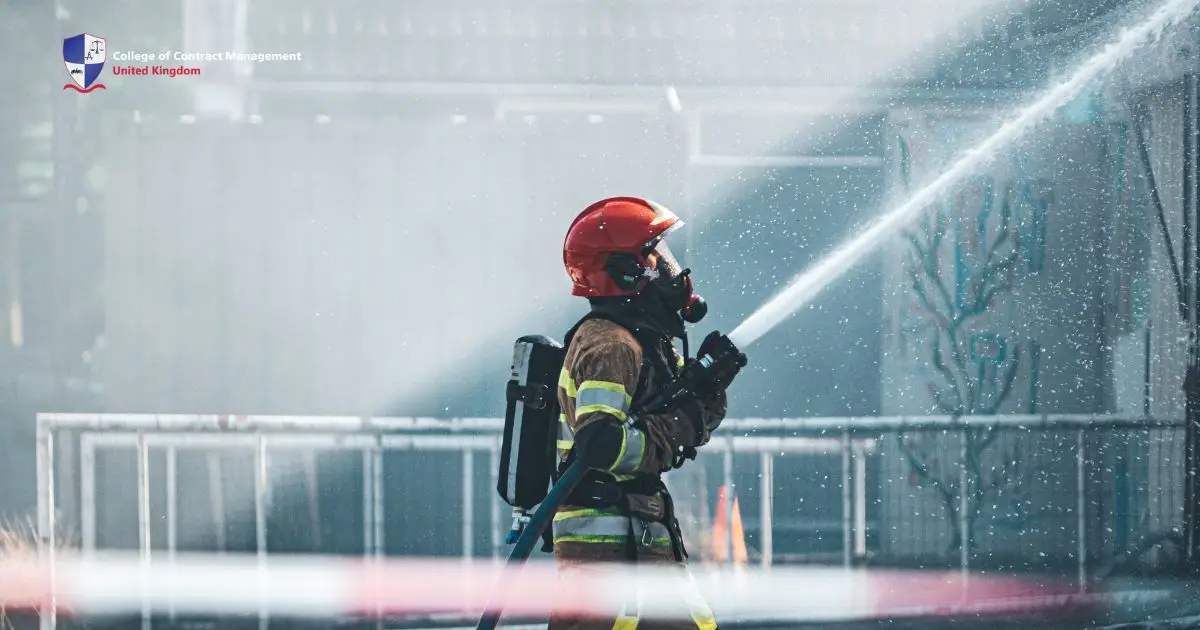Fire incidents happen fast, especially in kitchens where oil or grease overheats. This type of extinguisher is built for Class F fires. For example, stuff like burning oil or fat in deep fryers or pans. It handles high-heat grease fires that water or regular extinguishers just can’t stop safely. That’s why it stands out from the usual ones—it uses a special chemical to tackle the extreme heat and stubborn flames that oil fires bring. Only a wet chemical fire extinguisher does this job right.
You’ll usually find a wet chemical fire extinguisher in places like restaurants, takeaways, and food processing kitchens. They’re also handy at home if you’ve got a deep fryer. Anywhere oil’s involved, really. Having one nearby means that if a fire does break out, there’s something there that’s actually built to put it out properly.
How does a wet chemical fire extinguisher work?
A wet chemical fire extinguisher uses a potassium-based solution that comes out as a gentle mist. For example, the source of the fire is hot oil. The mist from this type of extinguisher cools the hot oil down, which helps stop it from catching fire again. At the same time, it creates a layer over the oil that cuts off the oxygen. No oxygen, no fire—that’s how it works.
It’s the mix of cooling and smothering that makes this type of extinguisher so good. Water or foam just don’t stand up to grease fires like this does. A wet chemical fire extinguisher is specially made to deal with extreme temperatures without flare-ups or splashes. That’s why it’s trusted in professional kitchens.
Reliability of a wet chemical fire extinguisher
There are loads of fire safety gear out there, but the wet chemical fire extinguisher stands out for a reason. It’s not just because it’s designed for oil fires—it’s because it works. When stuff’s heating up in a fryer or a pan, you need something that acts fast and actually stays effective after the flames go out.
It’s not like it just sprays foam, and that’s it. The chemical mist cools everything right down while forming this layer that stops oxygen from sneaking back in. This is important because oil fires can flare up again if the heat sticks around. The wet chemical fire extinguisher handles both sides of the danger.
Plus, it’s one of the few extinguishers that doesn’t make things worse when it’s used properly. Water? Terrible with oil. Powder? Messy and not always enough. But this one’s built for kitchen fires, and it shows. It’s reliable, quick, and gives you a real chance to stop things before they get outta hand.
Steps to using it safely
Using a wet chemical fire extinguisher the right way matters. First, pull the pin to unlock it. Then aim low, directly at the base of the flames. Don’t stand too close—keep your distance and stay steady. You’re not trying to blast it out; just calmly smother the flames before they spread.
Once aimed, squeeze the handle and move in circles. The idea is to gently coat the oil without splashing. The mist cools the surface while forming a barrier. After the flames die down, watch the area carefully. Hot oil might still be dangerous. A wet chemical fire extinguisher handles it, but always double-check afterwards.
Don’t reach for the wrong extinguisher.
When it comes to oil fires, using the wrong extinguisher can actually make things worse. Water reacts violently, turning into steam and spreading the flames. Powder might stop the fire briefly, but it won’t cool the oil. Only a wet chemical fire extinguisher does both— it puts the fire out and keeps it from coming back.
Here’s why the others fall short:
- Water: Dangerous with hot oil.
- Foam: Not designed for deep fryers.
- CO₂: Better for electrical fires.
- Dry Powder: Doesn’t stop re-ignition.
A wet chemical fire extinguisher is really the only one made for oil fires. It does the job quickly, safely, and properly. When used correctly, it could prevent a kitchen fire from turning into something much worse.
Placing your extinguisher in the right spot
It’s not just having a wet chemical fire extinguisher that matters—it’s putting it somewhere useful. Mount it close to cooking stations like deep fryers, but avoid placing it directly above them. You need to be able to reach it safely, without stepping into danger just to get hold of it.
Exit points are another smart spot. That way, a wet chemical fire extinguisher can be used while backing away from the fire. Keep prep areas clear, make them easy to spot, check them regularly, and label them clearly. A fire extinguisher is only helpful if you can actually get to it in time.
Training that actually makes a difference
A wet chemical fire extinguisher only works if someone knows how to use it. That’s where training comes in. Every staff member in a kitchen should be shown how to handle one properly. No guessing, no freezing up—just calm, clear action when it matters most. That’s the key to stopping panic in its tracks.
Training should cover all the basics. Know your extinguishers, know the different types of fire, and know when to walk away and call for help. Even a wet chemical fire extinguisher won’t fix every situation, but knowing how to use it gives you a serious advantage if a small fire breaks out. Taking training enables you to handle situations that require this tool and maximise its usage.
Knowing when it’s the right tool
A wet chemical fire extinguisher isn’t for every kind of fire. You wouldn’t use it in an electrical box or rubbish bin. But when it comes to hot oil and fat, this is the one you want. It’s designed to cool the fire and prevent it from starting up again.
If you’re ever in doubt or if the fire feels too big, step away and call it in. But if you’ve got the training and the flames are still manageable, a wet chemical fire extinguisher can stop it quickly. Always use it with care, and always monitor the area afterwards.
Every kitchen deserves the right protection.
Grease fires aren’t rare—they happen more often than people realise. That’s why a wet chemical fire extinguisher is more than just equipment—it’s peace of mind. Whether it’s your home kitchen or a high-pressure commercial one, having the right fire extinguisher ready to go is one of the smartest safety steps you can take.
No one wants to deal with a fire, but if it happens, you’ll want to know you’ve got the right tools in place. A wet chemical fire extinguisher is simple, effective, and made for the job. It won’t just stop the flames—it might protect lives and livelihoods too.
Take your safety skills further with the College of Contract Management
Once you understand how to use a wet chemical fire extinguisher, you might want to go a bit further. The College of Contract Management offers brilliant courses in fire safety, construction health and safety, and management. They’re perfect if you work in kitchens or buildings or just want to sharpen up your knowledge.
Their courses fit around real-life—flexible and full of learning you’ll actually use. You’ll get the hang of handling emergencies, understanding safety rules, and doing things the right way. If you’ve just mastered how to use a wet chemical fire extinguisher, this could be the perfect next step to keep levelling up





